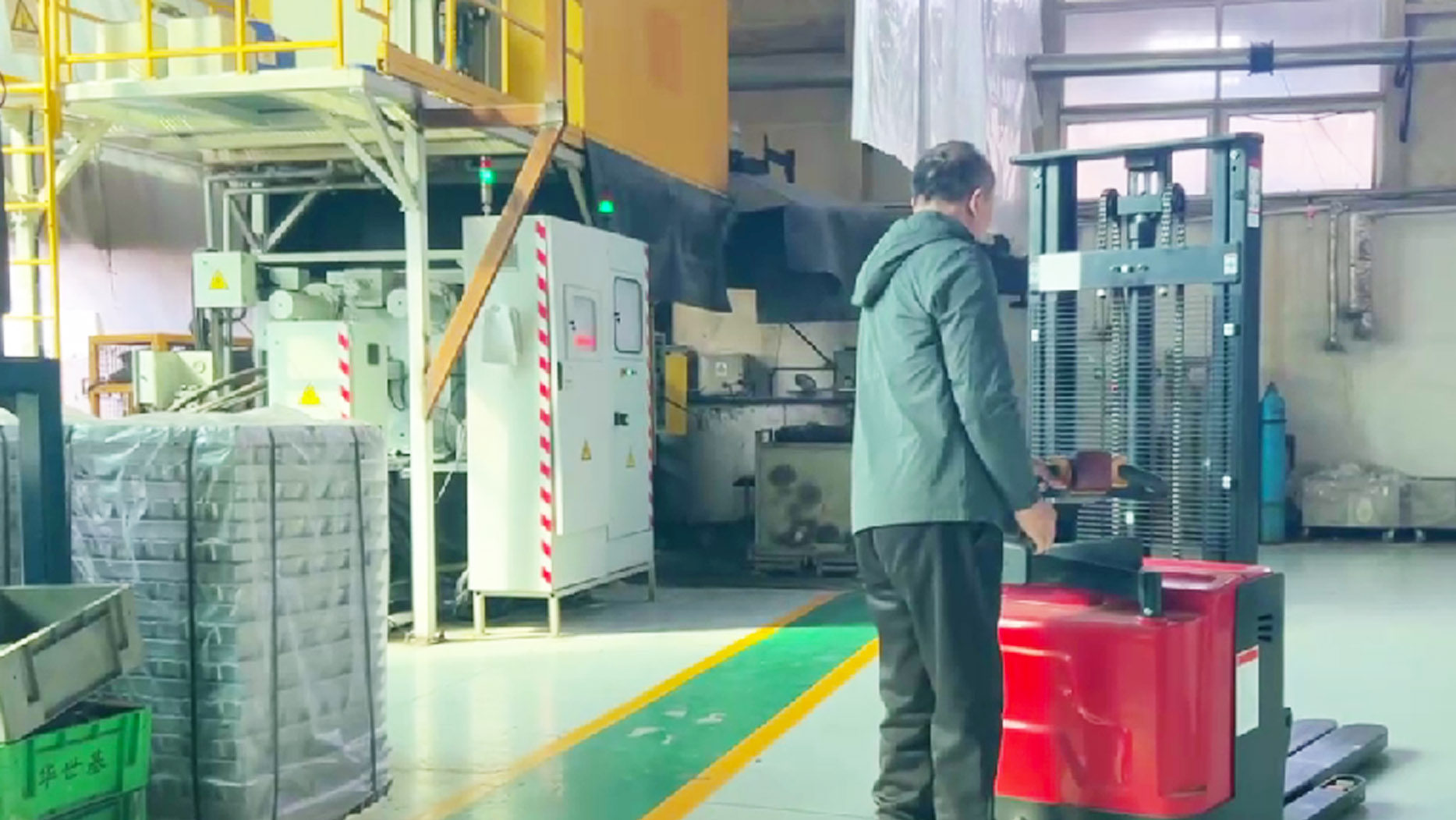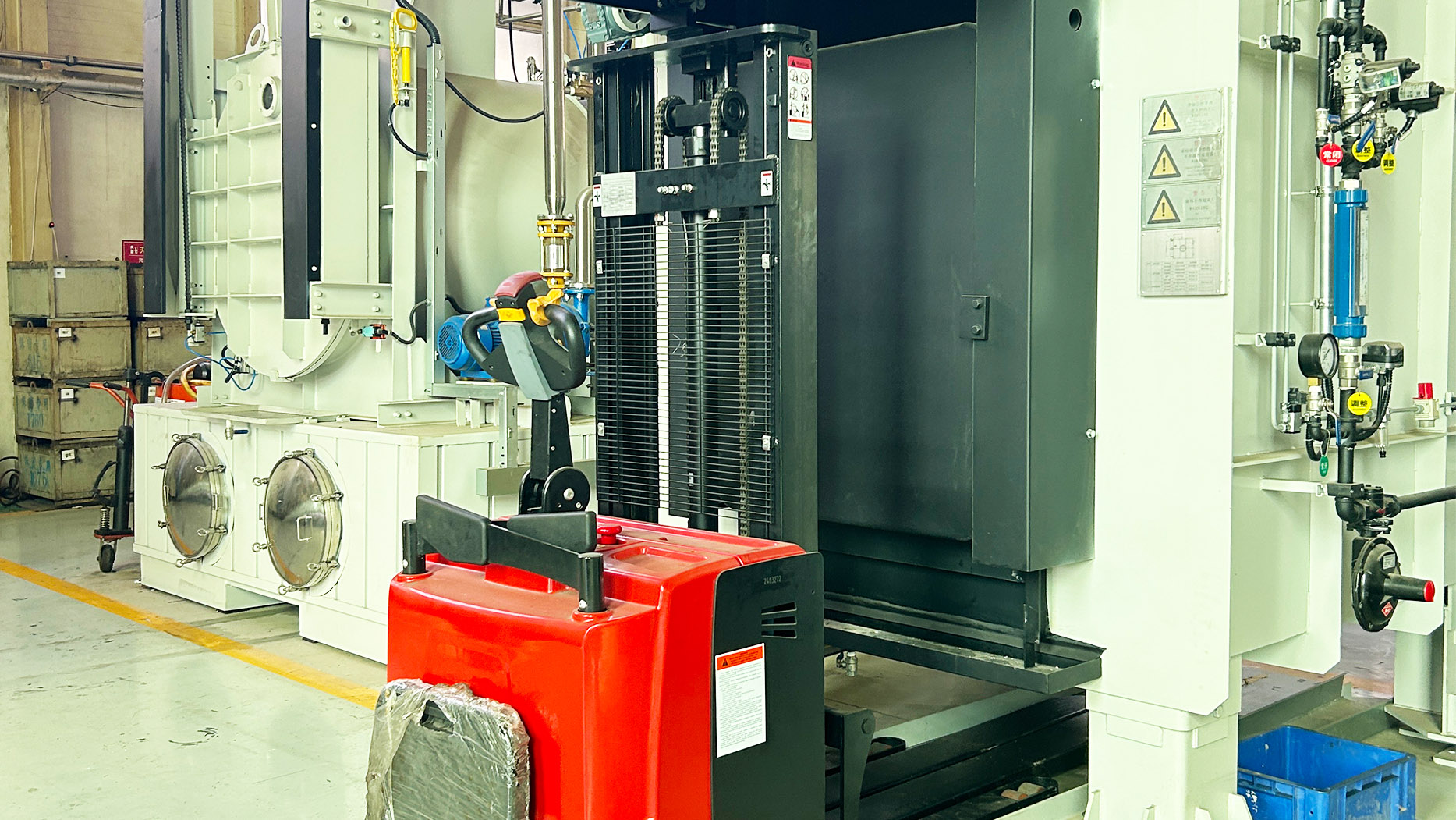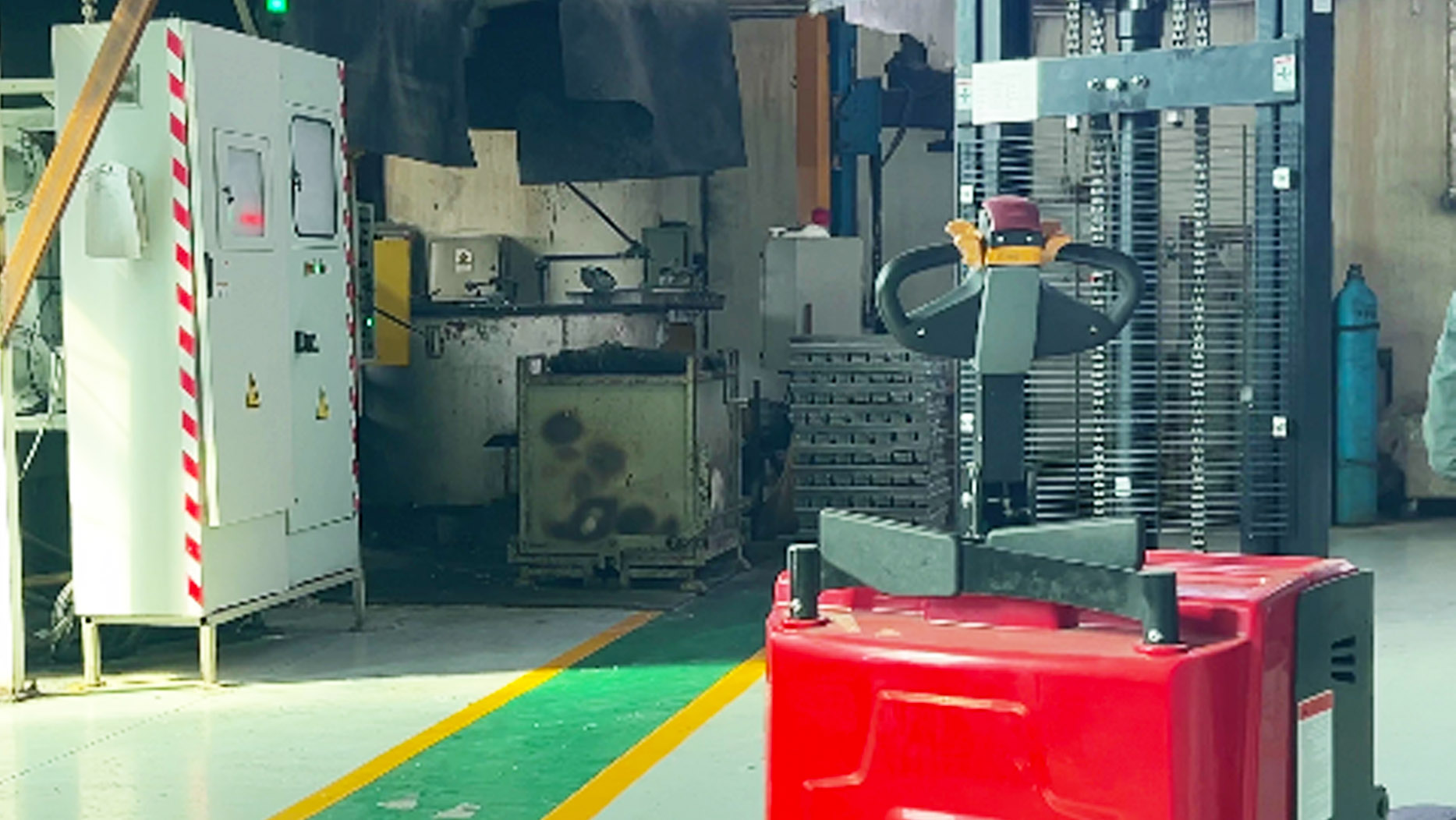I. Introduction
Hook: "Imagine a bustling warehouse: pallets stacked high, workers moving with purpose. To the untrained eye, the equipment might seem interchangeable – a forklift here, a stacker there. But appearances can be deceiving. Many people use the terms "stacker" and "forklift" interchangeably, leading to confusion about their capabilities and appropriate use."
Briefly define forklifts and stackers, highlighting their core functions: "Forklifts are powerful machines designed to lift and transport heavy loads over considerable distances, while stackers are more compact devices primarily used for vertical stacking within tighter spaces."
State the article's purpose: "This article aims to clarify the distinctions between stackers and forklifts, providing a comprehensive comparison of their design, functionality, performance, and applications."
Thesis statement: "While both lift and move materials, stackers and forklifts differ significantly in design, capabilities, and applications, making them suitable for distinct material handling tasks."
II. Core Differences: Design and Functionality
A. Forklift Characteristics
Detailed description of forklift design: "Forklifts are characterized by their robust construction, featuring a counterweight at the rear for stability, a mast for vertical lifting, and a pair of forks at the front to engage with loads. The operator typically sits in a protective cage or cabin, providing a commanding view of the work area. The counterweight is crucial; it balances the weight of the load being lifted, preventing the forklift from tipping forward."
Explanation of their primary function: "Their primary function is heavy-duty lifting and horizontal transport of palletized loads and other materials over longer distances. They are designed to handle substantial weight and navigate uneven surfaces."
Types of forklifts: "Forklifts come in various types, including internal combustion (diesel, LPG) models for outdoor use and heavy loads, electric forklifts for indoor applications with emissions concerns, and rough terrain forklifts with large tires and powerful engines for outdoor, uneven terrain."
Emphasis on their versatility and heavy load capacity: "Forklifts are known for their versatility, capable of handling a wide range of load types and weights. Their powerful engines and robust design enable them to lift very heavy items to significant heights."
Detailed description of stacker design: "Stackers, in contrast, are more compact and lighter than forklifts. They often feature a simpler design, and are frequently pedestrian-operated (walk-behind) or ride-on, with a smaller platform for the operator. They also have a mast and forks, but these are generally less robust than those found on forklifts. Some stackers have adjustable outrigger legs for added stability."
Explanation of their primary function: "Their primary function is vertical lifting for stacking pallets in confined spaces and for short-distance horizontal transport, typically within a warehouse aisle or storage area. They excel at maximizing vertical storage space."
Types of stackers: "Stackers include manual stackers (relying on manual hydraulic lifting), semi-electric stackers (with powered lifting but manual propulsion), and fully electric stackers (with powered lifting and propulsion)."
Emphasis on their space efficiency and suitability for warehouse stacking: "Stackers are designed for maneuverability in tight spaces. Their smaller size and tighter turning radius make them ideal for navigating narrow aisles and maximizing storage density in warehouses."
C. Comparative Analysis of Design and Function
D. Side-by-side comparison:
| Feature | Forklift | Stacker |
| Size | Larger, more robust | Smaller, more compact |
| Power Source | Internal combustion or electric | Electric, sometimes manual |
| Operator | Seated | Pedestrian or ride-on |
| Lifting Height | Higher | Lower |
| Load Capacity | Higher | Lower |
| Stability | High | Moderate |
| Maneuverability| Good, but requires more space | Excellent in confined spaces |
Focus on key differences: "Forklifts are built for heavy lifting and long-distance transport, while stackers prioritize vertical stacking in tight spaces. Forklifts offer greater lifting height and load capacity, but stackers are more maneuverable and space-efficient."
III. Performance and Application
A. Forklift Performance and Applications
Discuss lifting capacity, travel speed, and operational range: "Forklifts boast lifting capacities ranging from a few thousand pounds to tens of thousands of pounds. They can travel at relatively high speeds, allowing for efficient movement of materials across a facility. Their operational range is generally limited only by fuel or battery life."
Applications: "Forklifts are essential for loading and unloading trucks, handling heavy materials in outdoor yards, operating in demanding industrial settings, and supporting construction projects. They are the workhorses of material handling."
Discuss the operators requirements for operation: "Forklift operation typically requires certified and trained operators due to the weight and power of the machines. Regulations often mandate specific training programs and licensing."
Discuss the various attachments that increase a forklift's versatility. "Various attachments, such as clamps, rotators, and side-shifters, can significantly increase a forklift's versatility, enabling it to handle diverse materials like rolls of paper, concrete blocks, and even shipping containers."
B. Stacker Performance and Applications
C. Discuss lifting height limitations, slower travel speeds, and space constraints: "Stackers have more limited lifting heights, typically reaching up to 20 feet, and travel at slower speeds compared to forklifts. Their design is optimized for use within the confines of a warehouse aisle or storage area."
Applications: "Stackers are ideal for applications such as stacking pallets in warehouses, organizing inventory in retail storage, supporting light manufacturing processes, and maneuvering in other confined spaces where forklifts would be impractical. They are commonly used to bring pallets to pickers."
Discuss the ease of use, and lower training requirements: "Stackers are generally easier to operate than forklifts, often requiring less extensive training. This makes them a more accessible option for businesses with less specialized material handling needs."
Discuss the limitations of stacker attachments. "Stackers typically have limited attachment options compared to forklifts, reflecting their primary focus on basic pallet handling. Common attachments might include simple fork extensions or side-shift capabilities for minor lateral adjustments."
IV. Cost and Operational Considerations
A. Initial Investment and Maintenance Costs:
Comparison of purchase prices: "Forklifts generally have a higher initial purchase price than stackers, reflecting their more robust construction, greater lifting capacity, and advanced features. Stackers, especially manual or semi-electric models, represent a more budget-friendly option."
Discussion of maintenance costs: "Maintenance costs for forklifts can also be higher due to their more complex mechanical systems and heavier-duty usage. Fuel or battery expenses also vary, with internal combustion forklifts requiring fuel and electric forklifts requiring battery charging. Stackers, with their simpler design, generally have lower maintenance costs."
B. Operational Efficiency and Safety:
Analysis of operational efficiency: "Forklifts offer greater operational efficiency for long-distance transport and heavy lifting, while stackers excel at maximizing storage density and efficiency within confined spaces. The choice depends heavily on the specific operational needs."
Safety considerations: "Both forklifts and stackers require proper operator training to ensure safe operation. Forklifts, due to their size and power, present a greater risk of accidents if not handled correctly. Stackers, while smaller, still require careful operation to prevent tip-overs and collisions, especially when operating at height. Stability and visibility are key safety factors for both."
D. Conclusion
Recap the key differences: "In summary, stackers and forklifts are distinct material handling machines. Forklifts are designed for heavy lifting and long-distance transport, while stackers are optimized for vertical stacking in confined spaces."
Reiterate that they are not interchangeable: "They are not interchangeable; each serves a specific purpose within the material handling spectrum."
Emphasize the importance of choosing the right equipment: "Choosing the right equipment based on specific operational needs is crucial for maximizing efficiency, productivity, and safety. A business needing to load trucks and move pallets across a warehouse yard will need a forklift. A business needing to densely pack goods into a small storage space will need a stacker."
Final thought: "The correct equipment choice, made after careful consideration of the application, can significantly increase productivity, reduce costs, and enhance workplace safety."
Post time:Apr.04.2025



